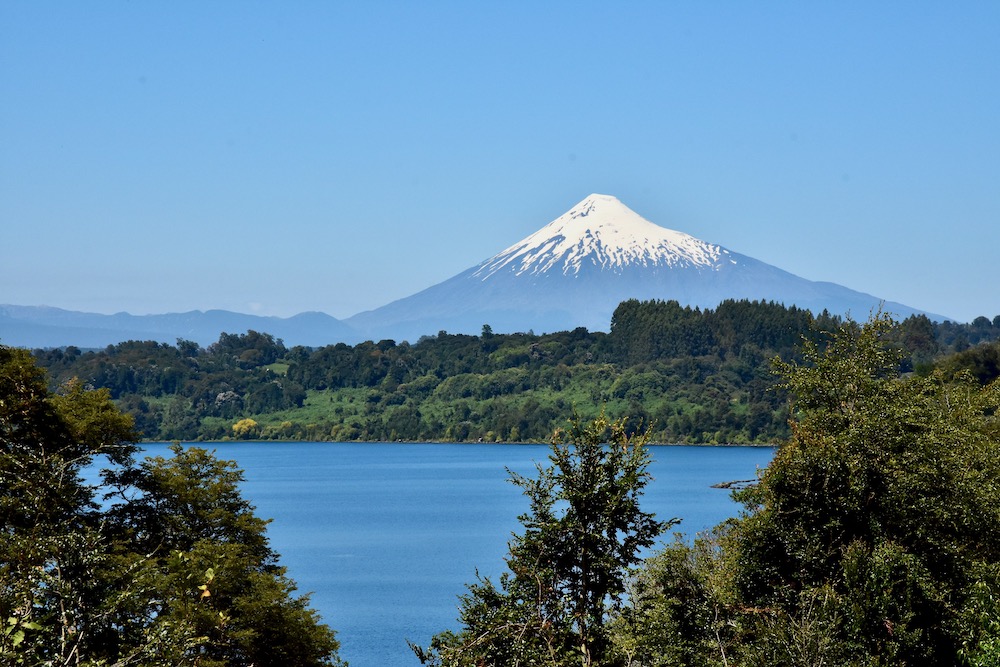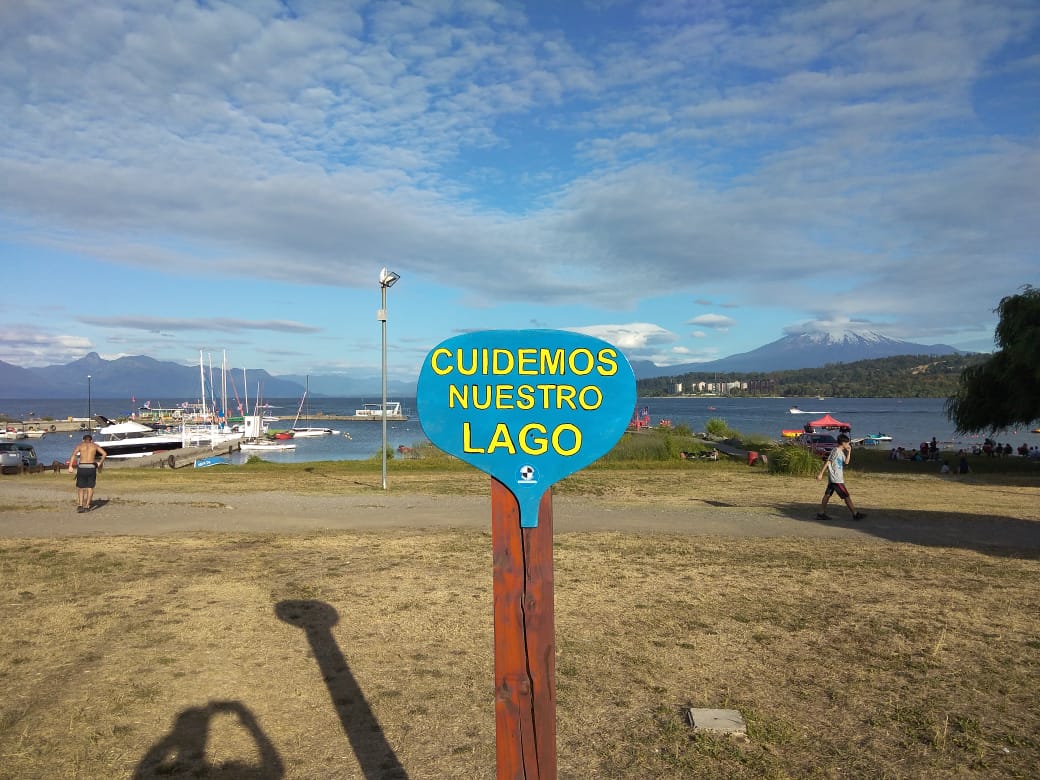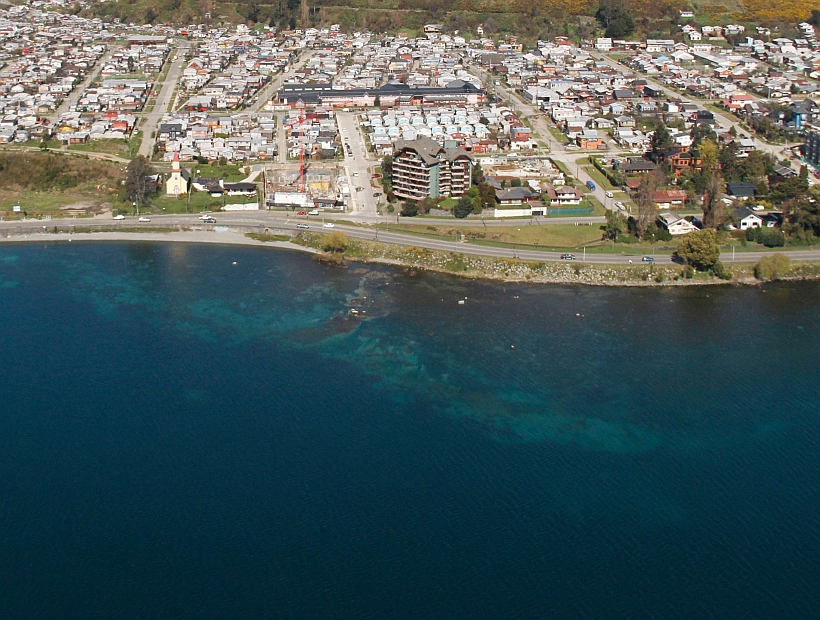 Lago Rupanco. Photo: Jimmy Langman/Patagon Journal
Lago Rupanco. Photo: Jimmy Langman/Patagon JournalBy Caterrina del Rio Giovanni
In 2017, Lake Villarrica in the Araucania region of Chile was declared by authorities a "saturated area” after it was found that the pollution in its waters exceeded the limits established for phosphorus and nitrogen. In the Los Lagos region, Lake Llanquihue has also failed to meet environmental quality norms, and for a couple of years now among other noticeable effects has been an accumulation of algae on shorelines near cities such as Puerto Varas.
As well, other lakes in southern Chile are facing similar problems now and in the years to come due to expanding tourism, new construction, aquaculture impacts or simply lax management of sewage.
To confront such issues, non-profit Chile Lagos Limpios was formed in 2018 to “work with all stakeholders to ensure that the lakes of Northern Patagonia balance economic development, community and natural resources conservation through a science-based and collaborative approach.”
.jpg) Ángela Delorenzo, Strategy Director; Cristóbal Valenzuela, Project Director; Matías Garib, Project Engineer; y Fernando Coz, Executive Director
Ángela Delorenzo, Strategy Director; Cristóbal Valenzuela, Project Director; Matías Garib, Project Engineer; y Fernando Coz, Executive DirectorThe founder, Angela Delorenzo, hit upon the idea to form the organization while working on her master's degree in environmental planning and urban design at the University of California at Berkeley where she was assigned a project comparing Lake Llanquihue to Lake Tahoe in California, which are similar lakes in terms of volume and watershed area.
When Angela returned to Chile, she organized a seminar at Lake Panguipulli to explain how Lake Tahoe worked in terms of governance and institutions. "It was very successful, and from that they realized that there was a lot of concern about what was going on with the lakes in Chile. After that they also started working with people who wanted to fund this, and that's how the foundation started," explains Matías Garib, a project engineer at Chile Lagos Limpios.
.jpg) Monitoring station at Lake Panguipulli. Photo: Chile Lagos Limpios
Monitoring station at Lake Panguipulli. Photo: Chile Lagos LimpiosToday, the organization is trying to achieve sustainable development for 23 northern Patagonian lakes, from Lake Colico to Lake Chapo, through science, environmental education and activism. Garib says above all, the group seeks to build awareness among residents of areas near these lakes. "People are beginning to realize how important it is to take care of our lakes. For example, in Puerto Varas last year they closed the beaches because of contamination. There is the issue of sewage, property development projects – the people are starting to realize that the lakes can be ruined quickly if they don’t act now.”
While it is true that the population is increasingly aware of the importance of protecting their lakes, the work carried out by Chile Lagos Limpios will only have visible results in the long-term. "People want solutions now, and the truth is that there are no solutions that decontaminate or solve all problems within even a year’s time. We are right now implementing a lake monitoring program," says Garib.
 "Take care of our lake," reads this sign at Lake Villarrica. Photo: Vigilantes del Lago
"Take care of our lake," reads this sign at Lake Villarrica. Photo: Vigilantes del LagoHe adds that their program requires at least 5 or 10 years of accumulated data to generate a three-dimensional model of a lake, which in turn can provide a baseline for predicting whether, due to different scenarios such as development or climate change, a lake will have problems with, for example, algae or contamination.
"When you explore different parts of the lake, you can determine, for example, if there is a real estate development of 400 houses, what would happen? Or, if another part of the lake installs a dairy with 250 cows and meadows, what effect would it have? In one section of the lake it can have a different effect than in another. That's why we say it allows us to feed future scenarios,” said Fernando Coz, executive director of Chile Lagos Limpios, in an interview with the website Pais Circular.
 Aerial photo shows a polluted Lake Llanquihue. Photo: N. Hernandez
Aerial photo shows a polluted Lake Llanquihue. Photo: N. HernandezThe importance of preventive action in areas such as southern Chile is key to preventing irreversible damage in the ecosystems surrounding these freshwater reserves.
In Lake Llanquihue, for example, since the 1980s the concentration of phosphorus has doubled. That makes the lake vulnerable to algae proliferation, especially during summer months, when there is a greater availability of light for photosynthesis.
To help forestall such issues, Chile Lagos Limpios installed a monitoring station in Lake Panguipulli which has temprature meters that detect the mixtures in the water and its movements. In 2019, a second station was implemented in Lake Ranco. The organization hopes to eventually set up monitoring stations, and also include measurements of oxygen levels, in other lakes such as Llanquihue, Caburgua, Colico and Tinquilco.
Thanks to initiatives like Chile Lagos Limpios, which seek to combine greater science, more citizen action and better public policies, the future of southern Chile’s vast and invaluable freshwater reserves are brighter but much work remains.
Join us this Saturday, February 15, at 7 p.m., at the amphitheater on the costanera of Puerto Varas (in front of the casino) at Cine Outdoor for the special panel “A Sustainable Future for Lake Llanquihue.” Participants will include Javier Trivelli, executive director of Fundación Geute; Victor Durán, founder of Vigilantes del Lago; Matías Garib, project engineer at Chile Lagos Limpios; Tomás Gárate of Transforma Puerto Varas; and Raffaele Di Biase, president of Corporación de Turismo de Puerto Varas.





.gif)



